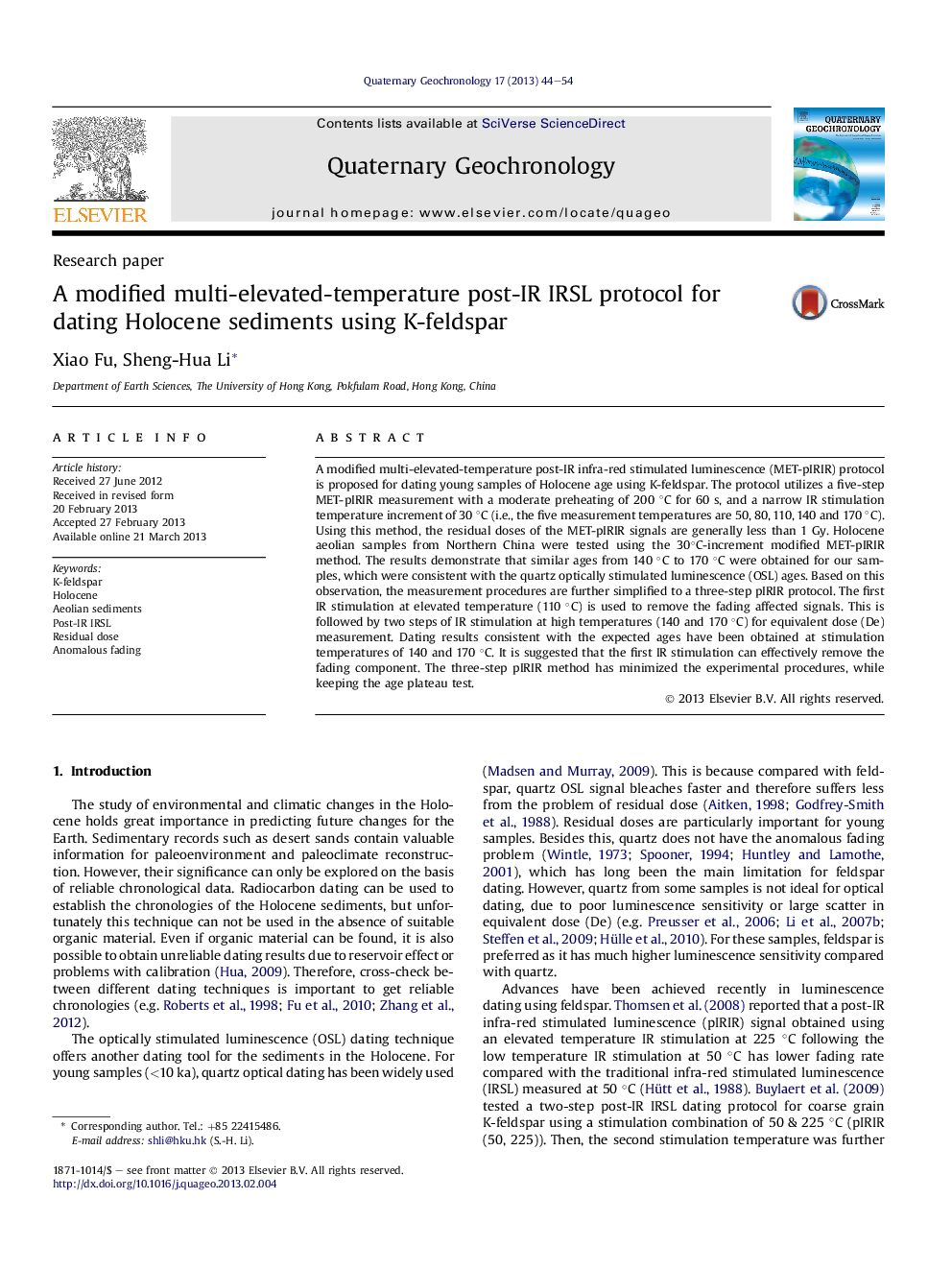| Article ID | Journal | Published Year | Pages | File Type |
|---|---|---|---|---|
| 4725056 | Quaternary Geochronology | 2013 | 11 Pages |
•A modified MET-pIRIR protocol is proposed for dating Holocene samples.•The method measures MET-pIRIR signal with low stimulation and preheating temperatures.•Residual doses are generally less than 1Gy using the new protocol.•The modified MET-pIRIR protocol is further simplified to a three-step pIRIR method.•These new methods are tested on Holocene aeolian samples from northern China.
A modified multi-elevated-temperature post-IR infra-red stimulated luminescence (MET-pIRIR) protocol is proposed for dating young samples of Holocene age using K-feldspar. The protocol utilizes a five-step MET-pIRIR measurement with a moderate preheating of 200 °C for 60 s, and a narrow IR stimulation temperature increment of 30 °C (i.e., the five measurement temperatures are 50, 80, 110, 140 and 170 °C). Using this method, the residual doses of the MET-pIRIR signals are generally less than 1 Gy. Holocene aeolian samples from Northern China were tested using the 30°C-increment modified MET-pIRIR method. The results demonstrate that similar ages from 140 °C to 170 °C were obtained for our samples, which were consistent with the quartz optically stimulated luminescence (OSL) ages. Based on this observation, the measurement procedures are further simplified to a three-step pIRIR protocol. The first IR stimulation at elevated temperature (110 °C) is used to remove the fading affected signals. This is followed by two steps of IR stimulation at high temperatures (140 and 170 °C) for equivalent dose (De) measurement. Dating results consistent with the expected ages have been obtained at stimulation temperatures of 140 and 170 °C. It is suggested that the first IR stimulation can effectively remove the fading component. The three-step pIRIR method has minimized the experimental procedures, while keeping the age plateau test.
